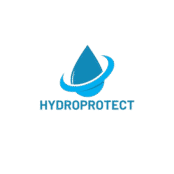Understanding Hotmelt Roof Waterproofing
Hotmelt roof waterproofing is becoming a revolutionizing choice for many warehouse owners, developers, and property managers aiming to enhance their building’s longevity. This innovative technology is not just a buzzword; it offers a highly durable and effective insulation solution that outshines traditional methods. In this article, we delve deep into understanding hotmelt technology, highlighting its unparalleled benefits for flat and commercial roofs, and what sets it apart in the waterproofing arena.
The Mechanics of Hotmelt Technology
What is Hotmelt Roof Waterproofing?
Hotmelt roof waterproofing involves the use of a combination of polymer-modified bitumen that is applied in a molten state. Once applied, it forms a seamless, fully adhered, waterproof layer on the roof surface. This layer offers high durability and resilience against the harshest environmental conditions, making it an ideal choice for commercial properties like warehouses and halls.
Application Process
The hotmelt application process is straightforward yet robust. It involves the following steps:
- Priming the roof surface to enhance adhesion.
- Heating the bitumen to a specified temperature to achieve the desired viscosity.
- Pouring and evenly spreading the molten bitumen across the roof area.
- Reinforcing the layer with geotextile or mesh for additional strength.
- Adding a protective top layer for UV protection and to allow foot traffic if necessary.
This method ensures the hot-applied material fully bonds to the roof deck, eliminating any risk of water ingress.
Advantages of Hotmelt Waterproofing Over Other Methods
Seamless and Fully Adhered System
Unlike traditional roofing membranes that have seams, hotmelt systems cure to form a seamless barrier. This feature dramatically reduces the chance of water ingress through joints or laps, enhancing the overall waterproofing performance of the roof.
Durability and Longevity
Hotmelt waterproofing is known for its exceptional lifespan. It can last as long as the building structure itself, provided it is applied correctly and maintained periodically. This makes it a cost-effective solution in the long run, as it reduces the need for frequent repairs or replacements.
Adaptability to Various Roof Shapes and Designs
The versatility of hotmelt systems allows them to adhere to virtually any roof design or shape. Whether dealing with unusual angles or intricate architectural details, hotmelt waterproofing can accommodate these challenges seamlessly.
Environmental and Cost Benefits
Hotmelt offers an eco-friendly option due to its long lifespan and the reduction of materials waste over time. Furthermore, the maintenance and repair costs are generally lower compared to other waterproofing methods, resulting in significant cost savings throughout the building’s life cycle.
- Reduced maintenance costs.
- Less frequent need for repairs.
- Lower long-term environmental impact.
Ideal Applications for Hotmelt Systems
Commercial and Industrial Buildings
Hotmelt systems are particularly beneficial for commercial and industrial buildings like warehouses and manufacturing plants. These structures often require durable, long-lasting solutions capable of handling heavy foot traffic and equipment loads while offering reliable waterproofing.
Flat Roofs and Decks
Hotmelt is an excellent solution for flat roofs and decks which are more susceptible to water pooling and leaks compared to pitched roofs. Its seamless adhesive nature ensures that even the toughest weather conditions don’t penetrate the waterproofing barrier.
Key Considerations for Implementing Hotmelt Systems
While the benefits are indeed compelling, it is crucial for developers and property managers to consider various factors when deciding to implement hotmelt roofing solutions:
- Expert Installation: It is essential to engage experienced professionals who specialize in hotmelt applications to ensure the system’s effectiveness and longevity.
- Quality Materials: High-quality materials guarantee not only performance but also contribute to the environmental benefits of the roofing system.
- Regular Maintenance: Routine checks and maintenance can further enhance the system’s lifespan and performance.
Summary
Hotmelt roof waterproofing presents a game-changing solution for warehouse and commercial property owners. With its seamless application, unmatched durability, and adaptability to various roof designs, it surpasses traditional waterproofing methods. As an environmentally friendly and cost-effective option, hotmelt systems provide a reliable shield against the elements while maintaining structural integrity over time. By considering factors such as expert installation and quality materials, developers and property managers can ensure their buildings benefit from this revolutionary technology.

